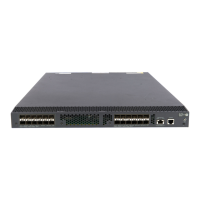The obtained CA certificate, local certificates, and peer certificates are automatically verified before they
are saved locally. If the verification fails, they are not saved.
This command is not saved in the configuration file.
Examples
# Obtain the CA certificate from the certificate distribution server. (This operation requires the user to
confirm the fingerprint of the CA root certificate.)
<Sysname> system-view
[Sysname] pki retrieve-certificate domain aaa ca
The trusted CA's finger print is:
MD5 fingerprint:5C41 E657 A0D6 ECB4 6BD6 1823 7473 AABC
SHA1 fingerprint:1616 E7A5 D89A 2A99 9419 1C12 D696 8228 87BC C266
Is the finger print correct?(Y/N):y
# Obtain the local certificates from the certificate distribution server.
<Sysname> system-view
[Sysname] pki retrieve-certificate domain aaa local
# Obtain the certificate of the peer entity en1 from the certificate distribution server.
<Sysname> system-view
[Sysname] pki retrieve-certificate domain aaa peer en1
Related commands
• display pki certificate
• pki delete-certificate
pki retrieve-crl
Use pki retrieve-crl to obtain CRLs and save them locally.
Syntax
pki retrieve-crl domain domain-name
Views
System view
Predefined user roles
network-admin
Parameters
domain-name: Specifies the name of a PKI domain, a case-insensitive string of 1 to 31 characters.
Usage guidelines
CRLs are used to verify the validity of the local certificates and the peer certificates in a PKI domain. To
obtain CRLs, a PKI domain must have the proper CA certificate.
The device can obtain CRLs from the CRL repository through the HTTP, LDAP, or SCEP protocol. Which
protocol is used depends on the configuration of the CRL repository in the PKI domain:
214

